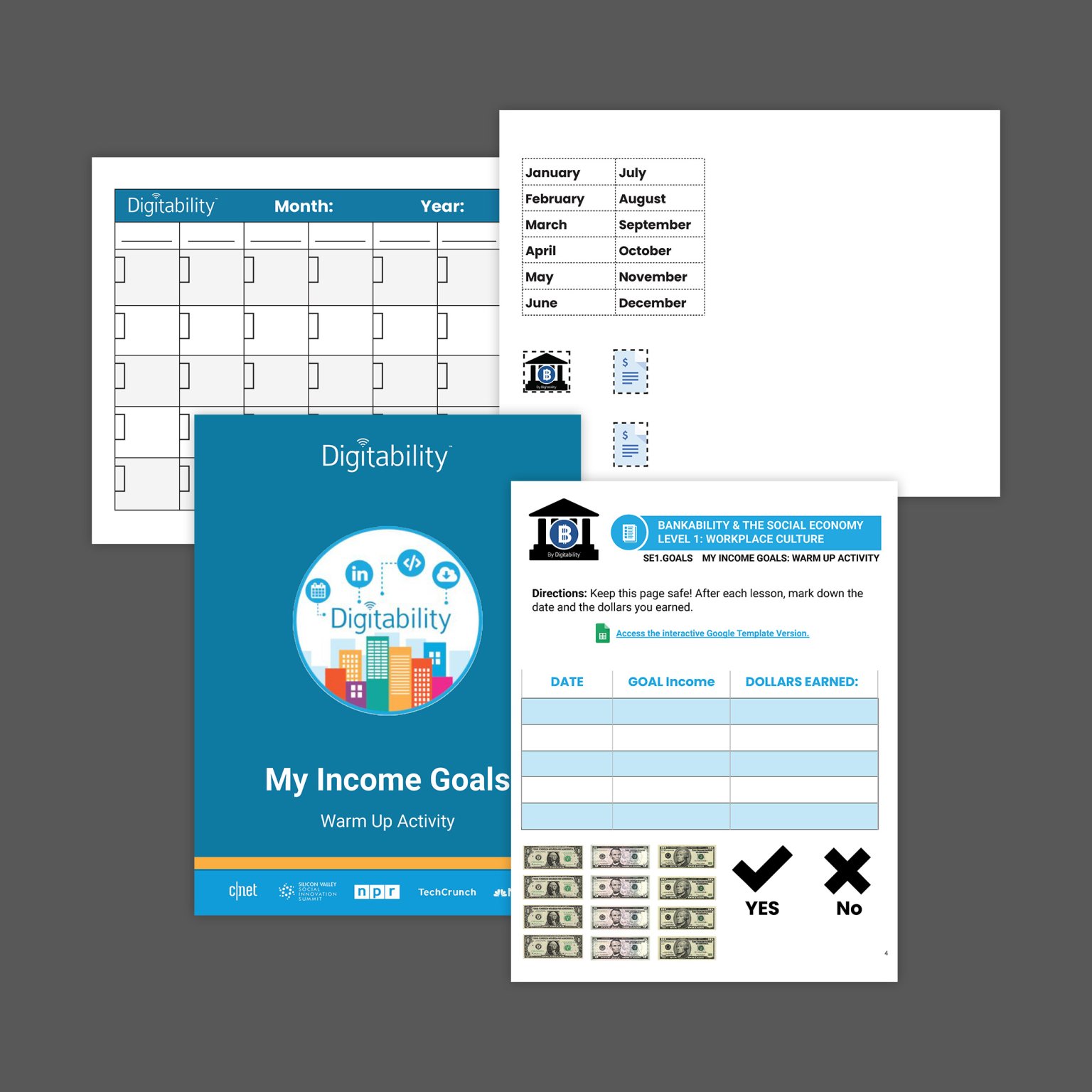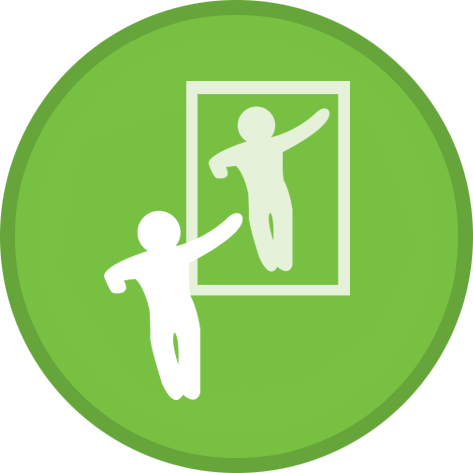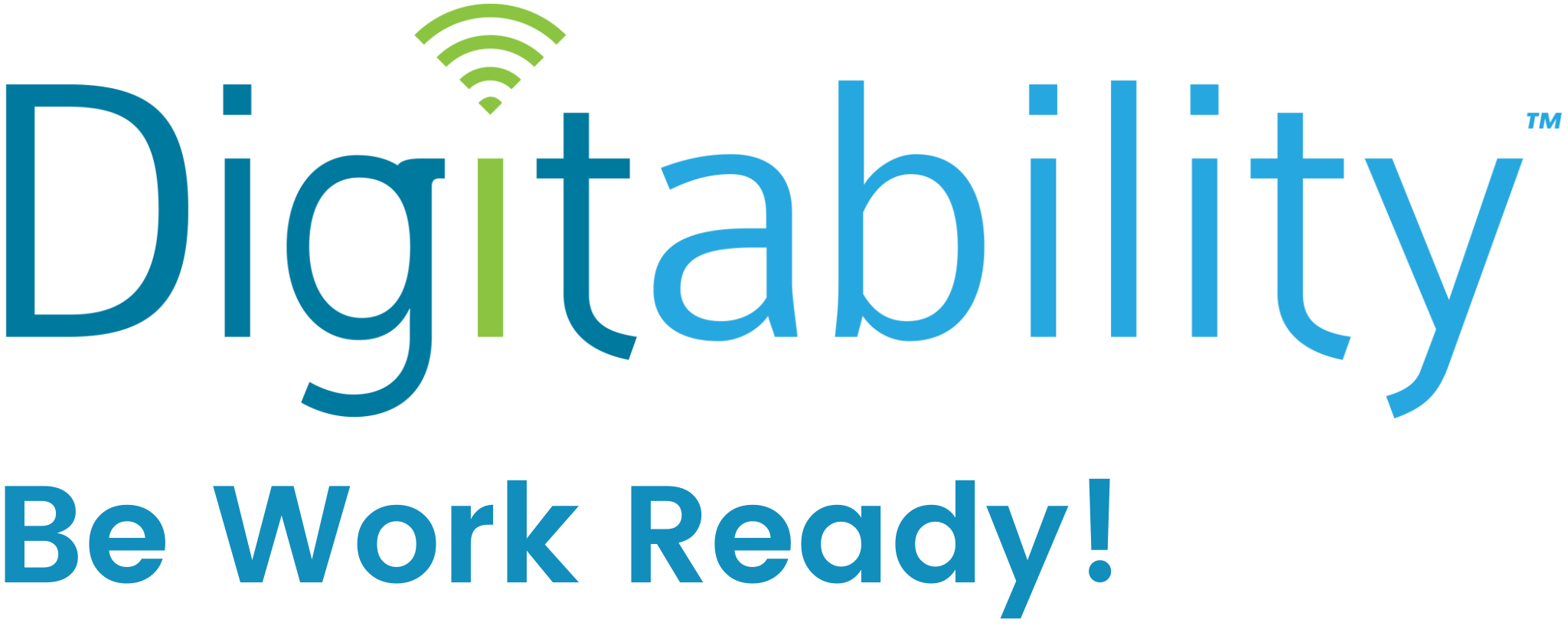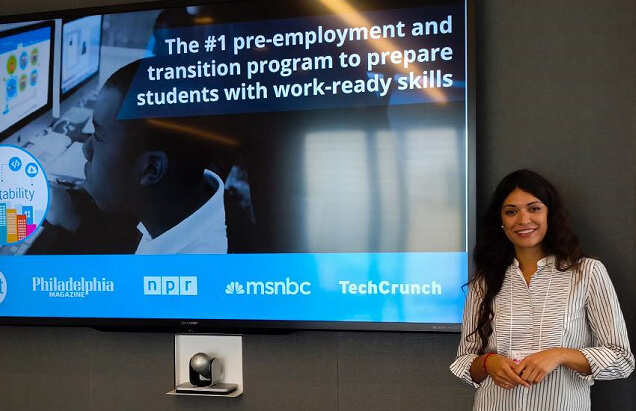Modifying Instruction During the Online Activity

No Two Students are the Same; Neither are their IEP Goals
Each student requires something different when it comes to their list of IEP goals. Every day teachers are charged with finding ways to engage, support, motivate and differentiate for each of their students.
Digitability has organized strategies for streamline evidence-based practices for any given classroom with a wide-range of student needs including varying cognitive abilities, expressive and receptive language, self-regulation skills, and age-appropriate behavior. It’s a tall order for life skills teachers to manage.
Get Your FREE Quote Today!
Overview of the Online Activity
The Online Activity is designed to shift the communication dynamic in the classroom from being teacher-led to student-driven. This is to get students workplace ready and increase workplace communication skills and peer-to-peer collaboration. If students are looking toward the teacher for validation or instruction, the teacher can say “Your classmate is leading the group right now, if you have a question you can ask them.”
The teacher will ask "For a Participation Dollar, who would like to lead our team in completing this activity?" The selected student will be awarded a Participation Dollar. The Online Activity follows the lesson video. It will ask students questions that use language and concepts from the video.
The leading student will then survey their peers to identify what they believe is the correct answer to their activity. After they receive input from their peers, the student who is leading the activity will select an answer. When the correct answer is selected, music will play and students can celebrate with a dance. If an incorrect answer is selected, the student will receive help and try again until the badge is unlocked.
Teachers can prompt the leading student to elicit feedback from their peers in a variety of ways. Students can ask for the class to raise their hands or give thumbs up/down to agree or disagree with a certain answer. Students can also call on peers and ask them “Which answer do you think is correct?” Teachers should prompt students to use a method that is most appropriate for that student to lead.
Meet the Student Personas
Note: The following personas are meant to illustrate a range of cognitive, communicative and behavioral needs for a wide-range of learning styles. These personas were created to help teachers identify the characteristics and associated strategies for their students needs.

Advanced Tier 1 Student: Drew can read, write, and comprehend paragraphs. Academically, he is one year below grade level. He is reinforced by getting time to use his phone during school. Drew has low motivation to complete assignments. He has difficulty with self-regulation and responsible decision making. He also has difficulty with impulse control. Drew is charismatic and his peers are drawn to him, giving him the potential to be a leader.

Tier 1 Student: Marcus can speak in 2-3 sentences and is able to read and comprehend paragraphs. He is reinforced by watching videos on Youtube. Marcus’ behaviors that impede learning include interrupting and complaining. He consistently is helpful with other students in the class and is a strong problem solver.

Tier 2 Student: Abbey can speak in 4-5 word utterances, and she is able to read with little comprehension. Abbey is reinforced by listening to music. She has some behaviors that interfere with learning, such as making off topic comments and teasing others. Abbey tends to perseverate on fairies and princesses, which contributes to her off topic comments. However, Abbey is an active participant in lessons and frequently shares with her peers.

Tier 3 Student: Jonathan is primarily nonverbal, he uses a communication device inconsistently, and knows some signs. He is not yet reading and has limited listening comprehension. Jonathan is reinforced by playing computer games. He demonstrates behaviors that interfere with learning, such as aggressive behavior and not following directions. However, Jonathan consistently greets others and likes to participate in lessons.
Strategies for an Advanced Tier 1 Student

Advanced Tier 1 Student:
Functional Academics: Can read, write, and comprehend paragraphs; Academically, he is one year below grade level.
Language: Age-appropriate
Reinforcers: Time to use his phone during school
Behavior: Low motivation to complete assignments. Difficulty with self-regulation and difficulty with impulse control.
Strengths: Charismatic and his peers are drawn to him, giving him the potential to be a leader.
During the Online Activity: The teacher will ask "For a Participation Dollar, who can lead our class in the Online Activity?" As Drew leads the Online Activity, he can review the question and the three answer choices with the class. This is a great opportunity for Drew to use his leadership skills. He could ask each student “Which answer choice do you think is correct?” This can give students the opportunity to verbally answer or point to their choice.
Strategies for Prompting an Advanced Tier 1 Student
- Drew’s peers are drawn to him, and he enjoys leading his classmates. This makes Drew a great leader during the Online Activity, but he may need some assistance in engaging his peers.
- When Drew asks his classmates for feedback, he may not receive any responses, which may frustrate Drew. The teacher can prompt him through eliciting responses from his peers.

The teacher can provide a verbal reminder to Drew, “Drew , ask your classmates if they can give you a thumbs up if they agree with your answer.”
- The teacher could also provide a model prompt by demonstrating how to gather responses from the students. “Drew is going to point to an answer choice, if you agree, put a thumbs up. If you disagree, keep your hand down.”
- As Drew leads the class, the teacher should provide immediate feedback using the embedded Digitability language formulas.
repeat the answer + describe the behavior + deliver consequence
"Drew led our class in finding the correct answer, great job earning a Participation Dollar!"
In Level 2 of Digitability's Workplace Behavior Unit, students will identify and practice both the behaviors that will support their success in the workplace, as well as those behaviors that can be perceived as problematic. In these lesson plans, Digitability will explicitly explain how complaining impacts the workplace and depict strategies for developing self-regulation skills and a self-advocacy plan. In this level of Digitability, the teacher can utilize the Social Economy to assign a $1 fee for complaining to help Drew analyze the frequency of this behavior and strengthen his strategies for self-regulation. To learn more, contact our team.

- What is an Extinction Burst? It is important to understand that with some interventions the behaviors may seem to increase in frequency, intensity or duration before they begin to decrease. This is called an extinction burst. Evidence-based practices embedded in Digitability's Social Economy are tools that should be used consistently in order to be effective. It won't be a one-and-done solution!
Strategies for a Tier 1 Student

Tier 1 Student:
Functional Academics: Can read and comprehend paragraphs
Language: Can speak in 2-3 sentences
Reinforcers: Watching videos on Youtube
Behavior: Interrupting and Complaining
Strengths: Consistently helpful with other students, strong problem solver
During the Online Activity: The teacher will ask "For a Participation Dollar, who can lead our class in the online activity?" As Marcus leads the activity, he should survey his peers. However, Marcus makes a selection without surveying his peers first. Instead, he just clicks an answer choice.
Strategies for Addressing Not Following Directions
- The teacher can go back to the question and say “Let’s try again. Before you choose an answer you need to ask your classmates for their input. Why don’t you ask a few peers which answer they think is correct.”
- The teacher should also remind Marcus about the reinforcement contingency, “Marcus, to earn a Participation Dollar, you need to ask your classmates for their input before making a selection. So, for a Participation Dollar, try again and ask your peers what they think the correct answer is.”
- Whenever Marcus answers questions while demonstrating appropriate behavior, the teacher should provide immediate feedback using the embedded Digitability language formulas.
repeat the answer + describe the behavior + deliver consequence
"Marcus led our class in finding the correct answer, great job earning a Participation Dollar!"
- In Level 2 of Digitability's Workplace Behavior Unit, students will identify and practice more behaviors in the workplace that will support their success in the workplace as well as those behaviors that can be perceived as problematic. In these lesson plans, Digitability will explicitly explain how complaining impacts the workplace and strategies for developing self-regulation skills and self-advocacy plans for the workplace. To learn more, contact our team.
Strategies for a Tier 2 Student

Tier 2 Student:
Functional Academics: Can read with little comprehension, some writing skills, low IQ
Language: Speaks in 4-5 word utterances
Reinforcers: Listening to music
Behavior: Making off-topic comments due to perseverating on fairies and princesses, teasing others
Strengths: Actively participates in lessons, frequently shares with peers
During the Online Activity:. The teacher will ask "For a Participation Dollar, who can lead our class in completing the activity?" As Abbey leads the class in the Online Activity, she may require additional prompting to engage her peers and receive input from them. The teacher can prompt her to draw attention to each answer choice and ask her peers “Give a thumbs up if you think this is the correct answer.” However, Abbey may engage in an argument with her peers if she does not agree with them, saying “you’re wrong and I’m right!”
Strategies for Addressing Arguing
- To address Abbey’s arguing, the teacher should redirect Abbey and remind her of what she needs to do in order to earn reinforcement. “Abbey, your classmates are giving you input, and we need to be respectful of other people. It’s ok to disagree, but instead of arguing, you can listen to your peers’ input and then select an answer based on what you think. That’s how you can earn Participation Dollars, but not if you are arguing.”
- The teacher should structure prompting to support Abbey in getting feedback from her peers. The teacher can give a verbal prompt to remind Abbey to ask her peers for their input, and remind her to record their responses. As students give her input, Abbey can keep a tally chart so she can have a visual representation of which answer choice gets the most votes.

The teacher can provide a model prompt for Abbey by demonstrating how to elicit responses from peers. The teacher can say “Abbey will point to an answer. If you agree, give a thumbs up.” Then, the teacher can have Abbey repeat that direction to her peers.
- Any time Abbey provides responses with appropriate behavior, the teacher should provide immediate feedback using the embedded Digitability language formulas.
repeat the answer + describe the behavior + deliver consequence
"Abbey led our class in finding the correct answer, great job earning a Participation Dollar!"
- In Level 2 of Digitability's Workplace Behavior Unit, students will identify and practice more behaviors in the workplace that will support their success in the workplace as well as those behaviors that can be perceived as problematic. In these lesson plans, Digitability will explicitly explain how complaining impacts the workplace and strategies for developing self-regulation skills and self-advocacy plans for the workplace. To learn more, contact our team.
Strategies for a Tier 3 Student

Tier 3 Student:
Functional Academics: Not yet reading, limited listening comprehension, low IQ
Language: Primarily nonverbal, uses a communication device inconsistently, knows some signs
Reinforcers: Playing computer games
Behavior: Aggressive behavior, not following directions
Strengths: Consistently greets other, enjoys participating in lessons
During the Online Activity: The teacher will ask the class "For a Participation Dollar, who can lead our class in completing the activity?" As Jonathan leads the class in the Online Activity, the teacher can prompt him to point to each answer choice. The teacher can help facilitate feedback by asking the class “When Jonathan points to an answer choice, if you think it’s the correct answer please raise your hand.” As Jonathan is leading the class, he may use the board inappropriately, closing out the Digitability tab and attempting to open a computer game.
Strategies for Addressing Inappropriate Use of Materials
- If Jonathan attempts to open a computer game rather than using the materials appropriately, the teacher can use that to remind him of how to earn reinforcement. “Jonathan, I see that you’d like to go on to a computer game. Remember, in order to play on a computer game, you need to purchase that with your Participation Dollars. You can earn Participation Dollars by leading our class in our activity. Let’s try again.”
- Once Jonathan returns to the activity and is using materials appropriately, the teacher can prompt him through the process of leading the class. Jonathan can keep a tally chart to have a visual representation of the input from his peers. This will help Jonathan when making a choice in the Online Activity.
- If Jonathan selects the incorrect answer, a video will replay, reminding the class about the key concepts from the video and connecting them to the question. Then, he will get another opportunity to try again.
- At this point, the teacher could model the process of analyzing the results from surveying the class. “I see that most of our class agreed with the first answer. Since that answer has the most votes, let’s see if it’s correct by clicking it.”
- Any time Jonathan participates with appropriate behavior, the teacher should provide immediate feedback using the embedded Digitability language formulas.
repeat the answer + describe the behavior + deliver consequence
"Jonathan led our class in finding the correct answer, great job earning a Participation Dollar!"
- In Level 2 of Digitability's Workplace Behavior Unit, students will identify and practice more behaviors in the workplace that will support their success in the workplace as well as those behaviors that can be perceived as problematic. In these lesson plans, Digitability will explicitly explain how complaining impacts the workplace and strategies for developing self-regulation skills and self-advocacy plans for the workplace. To learn more, contact our team.
If you need additional resources or assistance in differentiation, reach out to your coach!




